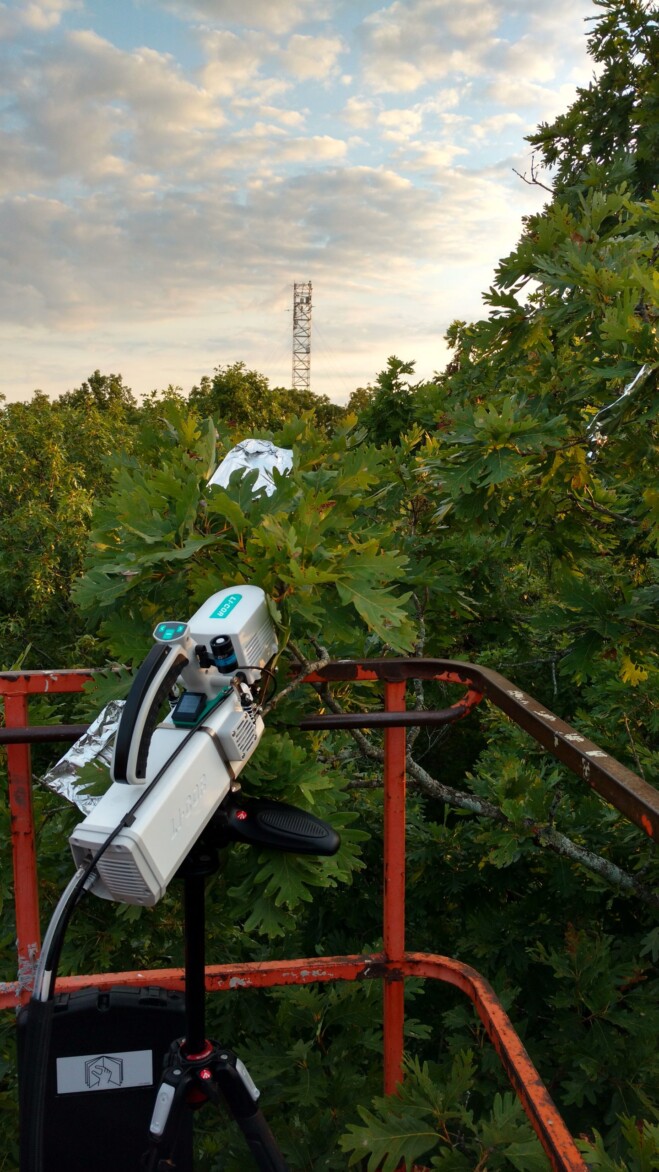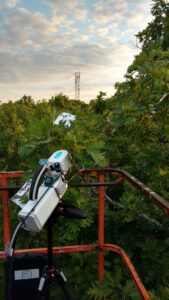

Researchers use this device located on a tower structure to measure evaporation rates in the forest (credit: Jeffrey Wood).
In a new study, University of Missouri researcher Jeffrey Wood introduces the “ecosystem wilting point” concept, which explains how whole forests respond to drought. Wood and his research team found that when forests reach their ecosystem wilting point, they are less able to function properly, which includes their ability to absorb carbon dioxide. To learn how the forest behaved during periods of drought, Wood combined measurements of evapotranspiration (the loss of water to the air) and ecosystem water status, which indicates how hydrated the forest is.
“The motivating reason for being able to understand the drought response of forests is that, globally, drought is important now, and it’s not expected to get better,” said Wood, an assistant professor in the College of Agriculture, Food and Natural Resources. “We wanted to develop a better way to understand and characterize these ecosystems, so we can use that information to help with modeling the dynamics of vegetation over time and better understand the future impact on these ecosystems.”
In pursuit of understanding the nuances of forests’ stress, Wood and his co-authors reanalyzed data collected during an extreme drought event that took place in 2012 in Baskett Forest, an outdoor laboratory of 2,266 acres located five miles east of Ashland, Mo. This study uses a method that was initially developed to understand the interaction between water and an individual cell. That method was later applied to leaves, and then Wood extended it in this study to analyze a whole forest.
In this study, an oak-hickory forest in central Missouri reaches its ecosystem wilting point between 2-4 weeks of extreme drought. At that point, the forest would need soaking rainfall to rejuvenate.
